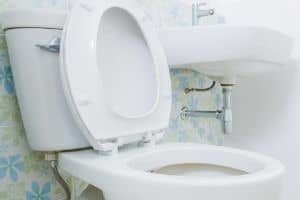Even if you’re not a diehard camper, hiker, or outdoors enthusiast, you can appreciate the natural beauty of our world. The United States has incredible national parks all over the country, and most cities have local parks, big and small, for your enjoyment.
If we all work together, we can have a significant impact on the quality of the air, water, and landscapes in our communities. But don’t worry; you don’t have to devote your entire life to conservation to have a significant impact.
You make some simple changes like choosing reusable water bottles and travel coffee mugs, turning your thermostat down a degree in the winter and up a degree in the summer, or turning off the faucet when you brush your teeth. Many conservation efforts require small lifestyle changes, which are usually free or very inexpensive.
If you’re serious about water conservation and you’re willing to spend a bit of money, you could upgrade your home to low-flush toilets, which even lowers your chances of getting a clogged toilet. In this article, we’ll tell you all about high-efficiency toilets and how you can save money and the planet with every flush.
High-Efficiency Toilets

If you have old toilets, they’re very likely the biggest consumers of water inside your home. In the 1990s, toilet manufacturers started selling low-flushing toilets in response to US government policies that required them to create more water-efficient appliances.
Unfortunately, the first high-efficiency models were extremely inefficient. Many early models had a smaller water tank but no other design modifications. As a result, people had to flush multiple times to clear waste, which ended up using even more water than the old toilets. Some large cities experienced excessive backups in the city sewer pipes because the ratio of water to waste was too low.
How Modern Low-Flush Toilets Conserve Water

When you press the lever to flush, the flapper inside the toilet tank rises, and gravity helps the water flow into the bowl.
The flow of water creates pressure and having smaller pipes helps maintain adequate force throughout your plumbing so that solids don’t stick. Well-glazed pipes also help reduce friction to keep things moving.
Some high-efficiency toilets rely heavily on pressure to wash away waste. Inside the tank, these units have vessels that create an air pocket, so when you flush the toilet, the air pushes water through the bowl. When the tank refills, the air pocket does as well.
The combination of gravity and pressure is how toilets have historically functioned. Modern low-flush toilets do a better job of utilizing gravity and maintaining pressure than early models, so upgrading today will actually help you conserve water.
Reduce Your Water Consumption

If you upgrade to a low-flushing toilet, you’ll use only 1.6 gallons per flush, which is a huge reduction. Since low-flush toilets use less water, it’s essential that you only flush bodily waste and toilet paper, which is specially designed to disintegrate in water.
If you put feminine products, wipes, or even facial tissue in the bowl, it’ll probably take multiple flushes to get it down, which consumes a lot of water. Plus, those materials do not degrade in the water and have to be filtered out manually at your local wastewater treatment plant.
Other than upgrading your toilet, there are several things that you can easily do to help the environment. Use electronic billing, only run your washing machine and dishwasher when they’re full, and maintain your vehicle regularly so that it runs as efficiently as possible.
You should also try to get your friends and neighbors on board with you. The best way for us to make a significant impact on the environment is to work together. So, how will you pitch in to help the environment today?


